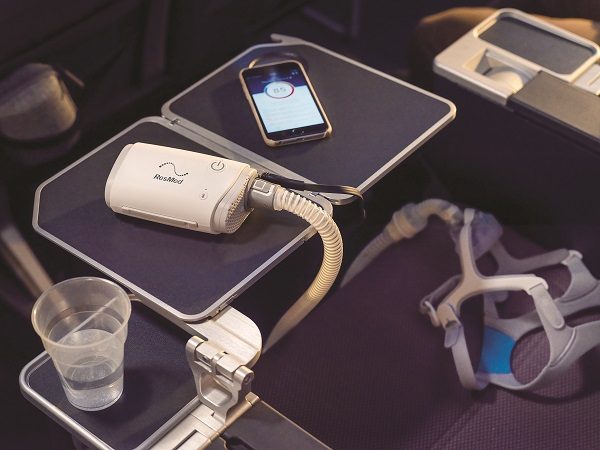Devices, Health, News, Research, Sleep Disorders, Travel And CPAP
How to choose a travel CPAP machine
How to choose a travel CPAP machine
They’re not all created equal
For frequent travelers, a portable PAP machine is smaller, lighter, easier to carry, and more discreet. A portable CPAP machine can fit into your regular carry-on bag, rather than needing a separate carrying case. And new innovations in design and technology have made it possible to experience the same performance with a mini PAP device as a home-based unit. But remember: not all travel PAP machines are the same. Look for machines with quiet operation, comfort therapy settings, and features that are similar to your home device.
Don’t be fooled when shopping for a travel CPAP machine
Travel PAPs come in a variety of sizes, shapes, and additional features. Some may look extremely small, but they require a lot of added components to work like your home system. Here are some other tips to help you find the machine that’s right for you:
- Components a device with fewer components requires less time to assemble for use and packs easily into your suitcase.
- Weight traveling light is important. Compare the weight of the PAP machines.
- Tubing since each manufacturer will have different tubing, look for those with smaller tubes that provide ease of packing and more freedom of movement when you sleep.
- Added features look for added features, such as, user friendly touch screen activation, built in USB charging port for cell phones or other devices, leaving outlets available for lamps, alarm clocks, etc.
However, you shouldn’t let the idea of traveling with your machine get you down. And you definitely shouldn’t leave your machine at home, even for short trips. What many people may not realize is that traveling with a CPAP machine is much easier than previously thought. Below you find some of our products for your traveling.
- AirMini Autoset Auto CPAP, ResMed
- Trascend Auto miniCPAP, Somnetics
- Provent Sleep Therapy, Alternative Sleep treatment
What to expect at the airport and on the plane
- It is recommended to label your CPAP case with a medical equipment luggage tag. However, most TSA agents are more than familiar with CPAP machines, and will easily recognize them as medical equipment.
- You CPAP will need to be x-rayed. To expedite the process take the machine out of the carry case and place in an individual screening bin. The rest of the equipment can stay in the carry case.Your CPAP machine may need to be swabbed by an agent to check for explosives residue. If this is the case, you can ask that the agent use a fresh pair of gloves and an unused swab.
- It may be a good idea to keep your prescription for the machine on you in the event TSA agents need additional confirmation for your equipment.
- If you plan on using your machine on the plane make sure you have the necessary adapters or back-up battery pack.
- Fill your humidifier with bottled water rather than using tapwater in the airport bathroom or the bathroom on the plane.
- If you feel slightly embarrassed about using your device on the plane, you can always purchase a CPAP travel hoodie to be more inconspicuous.
- You may want to check with your airline’s policy regarding CPAP usage in flight. Some airlines require a minimum of 48 hours notice of use of inflight CPAP machines to verify that your model meets FAA standards and regulations. Many airlines require that your machine is properly labeled indicating that it meets FAA safety regulations and is approved for use on an aircraft. click here for FAA regulations regarding medical carying and using medical machines in the Aircraft



